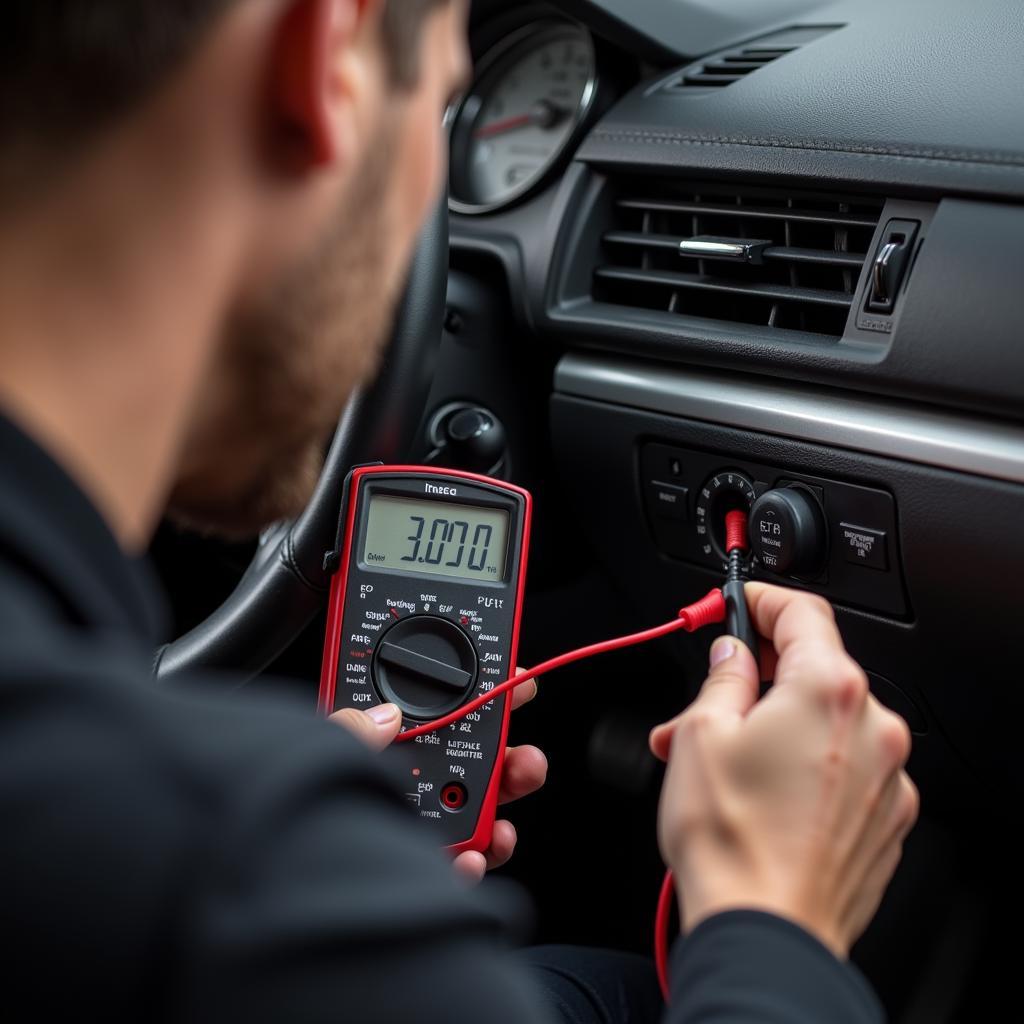A new crankshaft sensor can often fix a cold car starting problem. This article will explore why a faulty crankshaft sensor causes cold start issues, how to diagnose the problem, and the replacement process. We’ll also cover preventative maintenance and answer some frequently asked questions.
Why a Faulty Crankshaft Sensor Causes Cold Start Issues
The crankshaft sensor plays a vital role in your car’s engine management system. It tells the engine control unit (ECU) the position and speed of the crankshaft, which is crucial for timing the fuel injection and ignition. When the sensor malfunctions, especially in cold weather, the ECU may not receive the correct information, leading to difficulties starting the engine. Cold temperatures can exacerbate existing issues within the sensor, making the problem more apparent during cold starts.
The sensor relies on a magnetic field to detect the crankshaft’s position. Over time, this sensor can wear down or become damaged due to exposure to extreme temperatures, vibration, and other environmental factors. In colder temperatures, the internal resistance of the sensor can change, leading to inaccurate readings or a complete failure to send a signal. This is why a car might start fine when warm but struggle when cold.
Diagnosing a Faulty Crankshaft Sensor
Several symptoms may indicate a failing crankshaft sensor, especially prevalent during cold starts. These include:
- Intermittent stalling: The engine might stall shortly after starting, especially when cold.
- Rough idling: The engine might idle roughly or unevenly.
- Reduced engine performance: You might experience a decrease in power and acceleration.
- Check engine light: The check engine light might illuminate, indicating a problem within the engine management system.
- Difficulty starting a cold car: This is the most common symptom and the focus of this article. The car may crank but not start, especially in cold weather.
Using a diagnostic scanner can pinpoint the problem. The scanner will read any trouble codes stored in the ECU related to the crankshaft sensor.
Replacing the Crankshaft Sensor
Replacing a crankshaft sensor is often a straightforward process, even for someone with limited mechanical experience. However, it’s essential to follow the proper procedure to avoid further issues.
- Locate the sensor: The location varies depending on the car model, but it’s usually near the crankshaft pulley at the front of the engine. Consult your car’s repair manual for the specific location.
- Disconnect the electrical connector: Carefully disconnect the electrical connector attached to the sensor.
- Remove the sensor: Use the appropriate tool (usually a socket or wrench) to remove the sensor.
- Install the new sensor: Install the new sensor, ensuring it is properly seated and tightened.
- Reconnect the electrical connector: Reconnect the electrical connector to the new sensor.
After replacing the sensor, clearing the trouble codes from the ECU with a diagnostic scanner is recommended.
 New Crankshaft Sensor Installation Guide
New Crankshaft Sensor Installation Guide
Preventing Future Crankshaft Sensor Problems
Regular maintenance can help prevent future issues with your crankshaft sensor. Ensuring your engine is properly tuned and all other sensors are functioning correctly can minimize strain on the crankshaft sensor. Additionally, avoid using low-quality fuel, as this can contribute to engine deposits that can affect sensor performance.
“New Crankshaft Sensor Fixed Problem Cold Car”: Expert Insights
“Replacing the crankshaft sensor is a common fix for cold start issues. It’s a relatively inexpensive part and often an easy DIY repair,” says John Miller, a certified automotive technician with over 20 years of experience.
“Don’t ignore a check engine light, especially if coupled with cold start problems. It could indicate a failing crankshaft sensor or other serious issues,” adds Sarah Johnson, an automotive engineer specializing in engine management systems.
Conclusion
A new crankshaft sensor often resolves cold car starting problems. This article has provided a comprehensive guide to understanding, diagnosing, and fixing this issue. By following the outlined steps and tips, you can get your car running smoothly again, even on the coldest mornings. If you require further assistance, please don’t hesitate to contact AutoTipPro at +1 (641) 206-8880 or visit our office at 500 N St Mary’s St, San Antonio, TX 78205, United States.






Leave a Reply